Caprarola (Farnese castle) – Caprarola arx et horti Farnesiani
Detail
Date of first edition: 1596
Date of this edition: 1596
Dimensions (not including margins): 38,3 x 49,5 cm
Dimensions (including margins): 40,7 x 53,7 cm
Condition: excellent. Sharp copper engraving printed on strong paper. Original colouring. Looks like there once was a paperclip in the top left.
Condition rating: A+
Verso: text in Latin
Map reference: Van der Krogt 4, 781, State 1; Taschen, Br. Hog., p. 421.
From: Civitatis Urbis Terrarum (V: Urbium Praeipuarum Mundi Theatrum Quintum Auctore Georgio Braunio Agrippinate), first published 1596, this edition 1596, Köln. Van der Krogt 41:1
In stock
Caprarola (Farnese Castle) commented by Braun (on verso):
“The magnificent, splendid and exceedingly beautiful palace of Caprarola lies roughly a comfortable day’s journey from Rome, between Viterbo and Monterosa […]. Cardinal Alexander Farnese had it built by one of the leading architects of our day, Giacomo Barozzi da Vignola, high on the top of the mountain, in the immediate vicinity of a town by the name of Caprarola, as somewhere to retreat from the summer heat. […] Ultimately, the magnificence and splendour of Caprarola palace cannot be described in a single page; one could print an entire book about it.”
Taschen on Caprarola:
The magnificent palace of Caprarola, which is laid out in the shape of a pentagon on Monte Cimini, today lies in the Lago di Vico nature reserve. It was commissioned by Cardinal Alessandro Farnese – grandson of the notoriously nepotistic Pope Paul III – from the Bolognese architect Giacomo Barozzi da Vignola in 1559. Caprarola palace, also known as the Villa Farnese, is seen in cavalier perspective, allowing the viewer a partial glimpse into the circular inner courtyard of the massive pentagonal complex. Inside the courtyard are splendid colonnades, within which columned niches house the busts of Roman emperors. The magnificent gardens can also be admired in the engraving. The massive Villa Farnese is considered one of the finest examples of Renaissance architecture. The building, which dominates the surrounding countryside, is characterized by its strict proportions and sparing ornamentation. After Farnese’s death (1589) the villa passed to the Dukes of Parma and received little use. In the 19th century the villa served for a while as the residence of the heir to the throne of the Kingdom of Italy; today it is the occasional home of the Italian president. In 1580 Montaigne praised the building as the most beautiful palace in Italy, a compliment that probably inspired Braun and Hogenberg to include it in their city atlas.
Related items
-

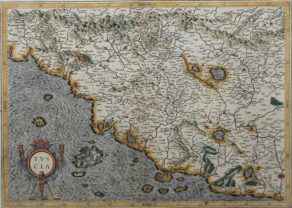
Tuscany – Tuscia
by Jodocus Hondius, Gerard MercatorPrice (without VAT, possibly to be added): €650,00 / $721,50 / £578,50Ohne Wörte
-

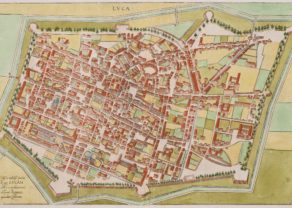
Lucca
by Georg Braun and Frans HogenbergPrice (without VAT, possibly to be added): €700,00 / $777,00 / £623,00 -

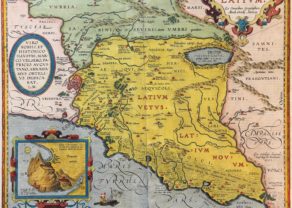
Ancient Lazio (with Rome and Portus) – Latium
by Abraham OrteliusPrice (without VAT, possibly to be added): €800,00 / $888,00 / £712,00
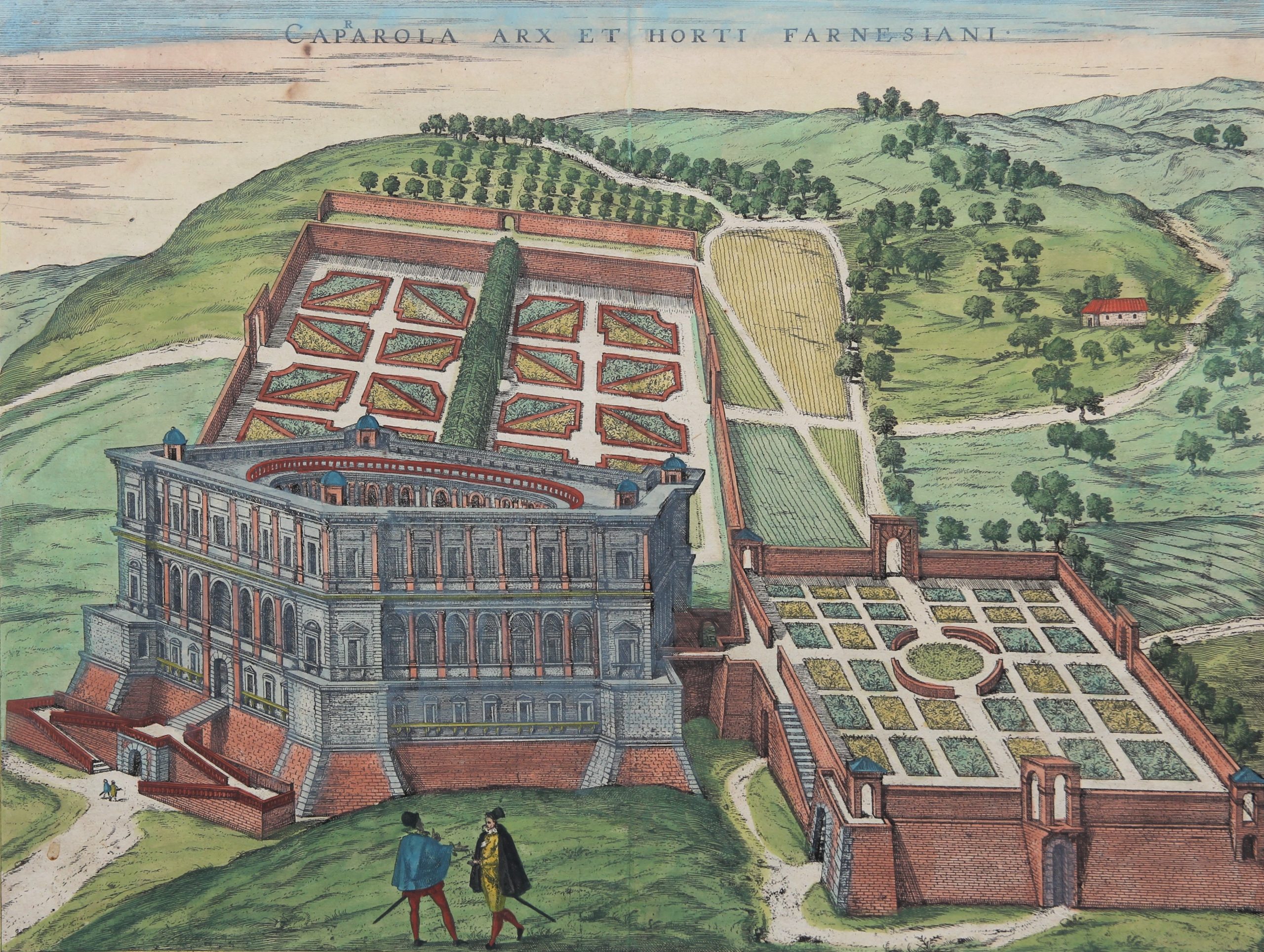
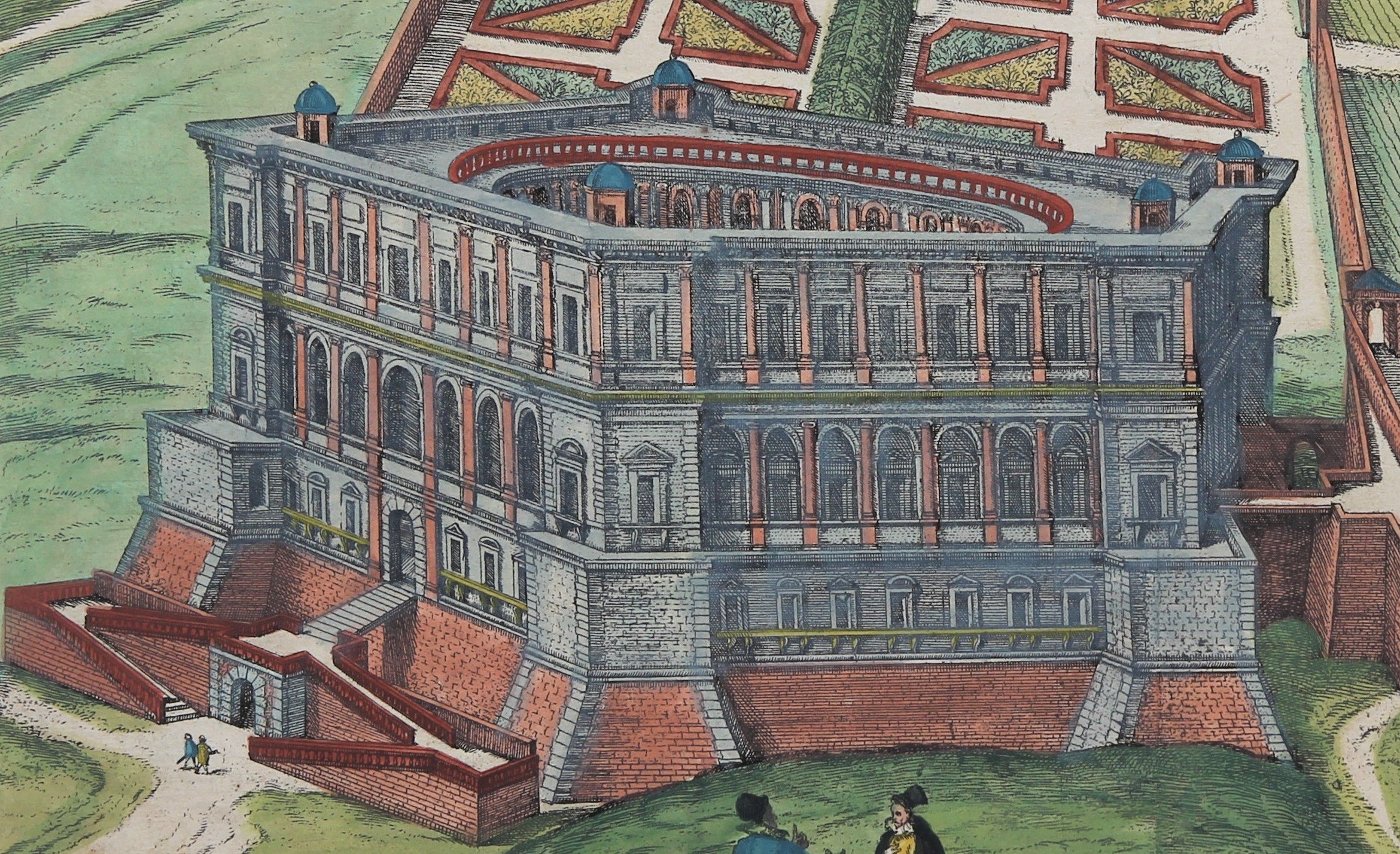
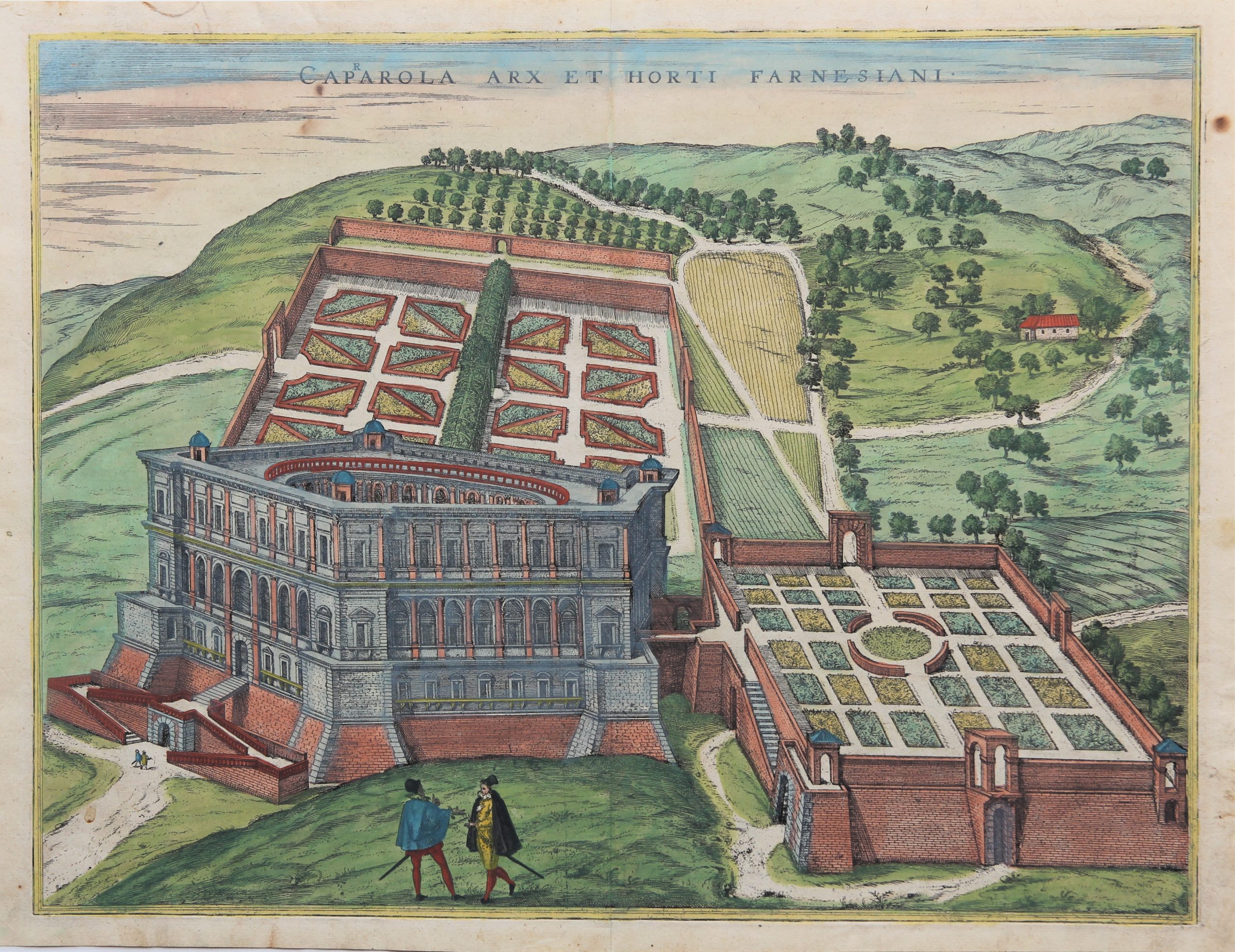
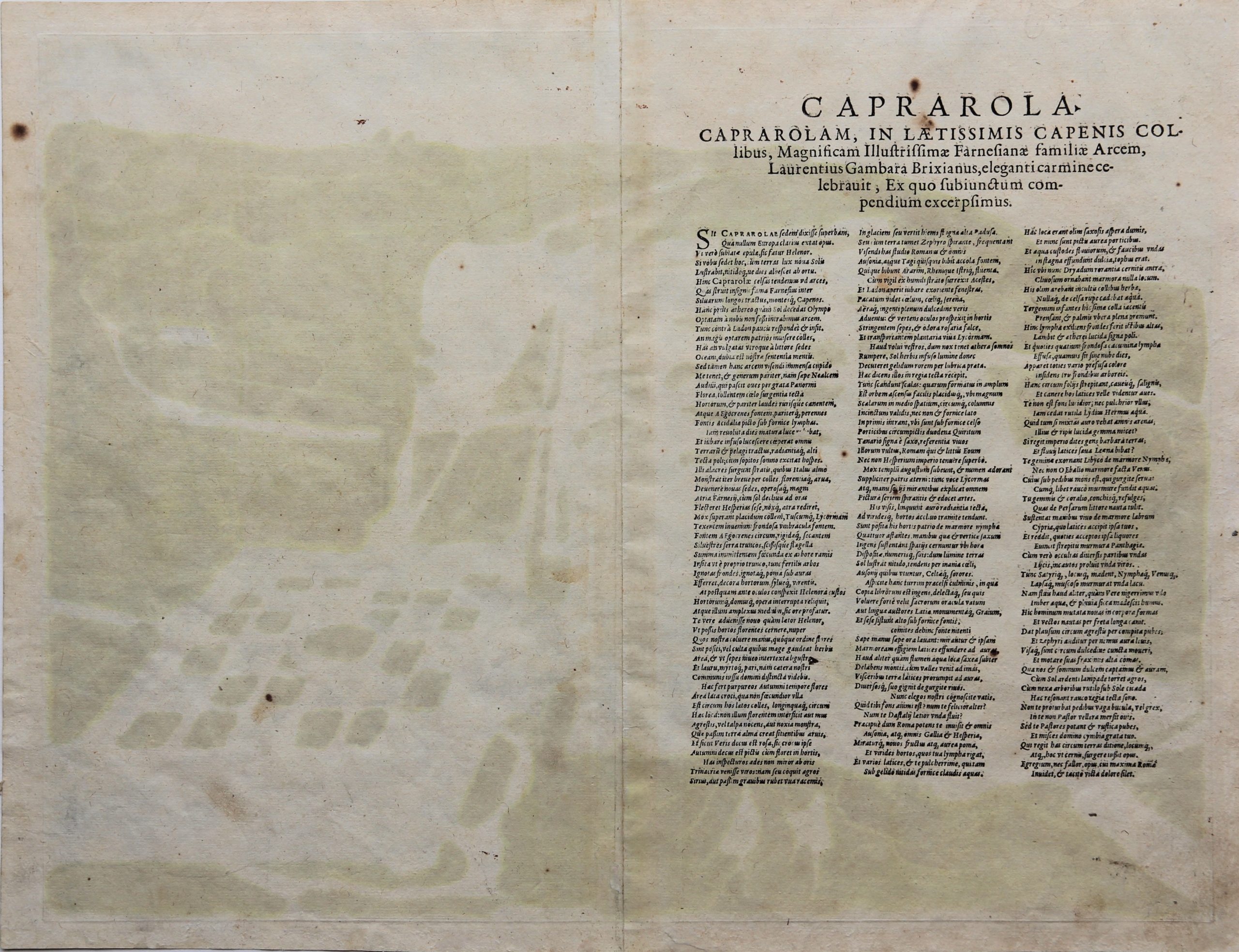
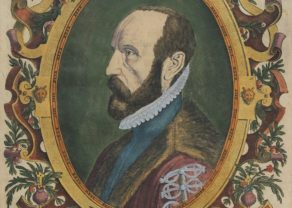
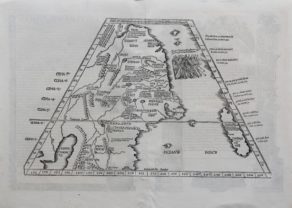
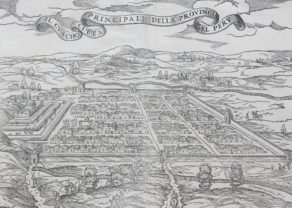
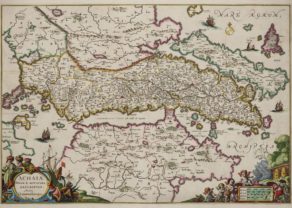
Caprarola… a palace with wall maps
… or Palazzo Farnese, a typical example of Italian Mannerism at the end of the 16th century. The palace was built between 1559 and 1575 for Cardinal Alexander Farnese. He was a grandson of Pope Paul III and is not to be confused with the identically named Governor in the Spanish Netherlands from 1578 to 1592; this Governor was a nephew of the Cardinal.
The building has five floors and a unique pentagonal floor plan with a round courtyard in the center (see two pictures).
Adjacent one finds a park of 18 hectares. Vignola designed the complex; he was also the architect of the Chiesa del Gesù in Rome, the mother church of the Jesuit order.
The palazzo also contains a magnificent Sala del Mappamundi, which occupies a full first floor side at the front with seven frescoes executed by Giovanni Antonio Venosino between 1573 and 1575: the world, the four continents (Australia was yet to be discovered), Italy and Palestine.
The embellishment of palaces with wall maps was popular in Italy at the end of the 16th century: other examples include: the stanza del guardaroba in the Palazzo Vecchio in Florence (see final picture) and the famous Galleria delle carte geografiche in the Vatican Museum.
The palace, which still exists, is located about 50 km north of Rome and may be visited; however, only with guided tours in Italian. One also needs a fully functioning GPS system to get there…
In the 19th century, the palace served as a residence for the Italian throne and these days the Italian president sometimes resides here.